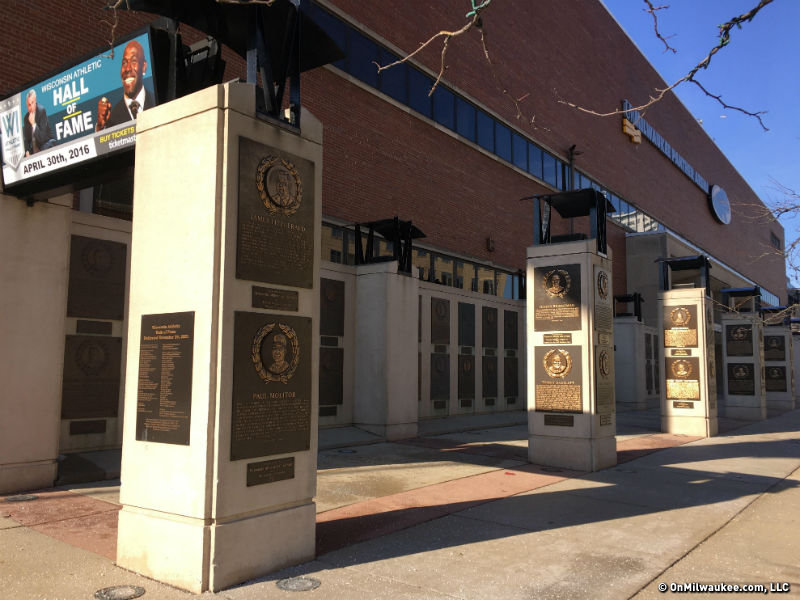When my husband and I told people we were vacationing in Grant County – partly for business, partly for pleasure – most reactions were heavily dosed with skepticism. "Grant County? Is there even anything to do there?"
I guess the answer really depends on what you think is fun. If your idea of vacation is constant stimulation, non-stop sightseeing, amusement park rides, bright lights and big cities, small towns like Fennimore and Cassville probably won’t blow your skirt up.
But personally, I get enough of the bright lights in my everyday life. I don’t need it in my vacation time.
So after spending the better part of a week there, my personal answer is yes – there is plenty to do in Grant County – more to do, even, than I could fit into four days. You just have to know where to look.
Driftless
Tucked in the extreme southwestern corner of the state, bordering both Illinois and Iowa, Grant County is often called the land that glaciers forgot. This is the driftless area, untouched by glacial activity during the last Ice Age, resulting in topography that is rough, wild and beautiful. Roadways curve around walls of exposed bedrock on the side of sharply rising hills, cross over verdant fields and dip into river valleys so quickly it will make your stomach drop.
We drove out from Madison at sunset, taking Highway 18 toward Dodgeville, continuing through Fennimore and eventually heading south on Highway 61 (also called "The Great River Road" for obvious reasons) to our final destination of Lancaster. This route is strikingly empty but anything but plain – once you get past Madison, there’s a distinct lack of urban sprawl, just vistas of cornfields and the dipping glare of the sun. It’s a whole lot of beautiful nothing. Most houses are shielded from view by 100-year-old trees.
If not for the occasional cell phone tower or passing car, it’s easy to forget which decade it is. There are long stretches of 18 that are unpopulated, but between Fennimore and Lancaster, you’ll see warehouses, gas stations, car dealerships, factories and Foremost Dairy – and in the distance, rising on the horizon, the landmark copper dome of Lancaster’s Grant County Courthouse.
Built in 1902 and designed in the Classic Revival style by Milwaukee's Armand Koch, the red sandstone Grant County Courthouse is the county’s icon – sometimes literally, since it appears on Lancaster’s official logo. The building was added to the National Register of Historic Places in 1979. Koch and his father, the legendary Milwaukee-based architect Henry Koch, also designed Milwaukee’s City Hall, The Pfister Hotel, Gesu Church, Turner Hall and the Golda Meir School.
Lodging and Dining
We stayed at the Lancaster Welcome Inn, 420 W. Maple St., a two-star hotel a few blocks away from the town square. The accommodations were simple, but it’s clean, inexpensive and the staff are very friendly. We especially appreciated the complimentary continental breakfast, free cable and mini-fridge. The owners were even kind enough to allow a late check-out time.
We got in late our first night, but luckily found Doolittle’s, 135 S. Jefferson St., also on the town square (but then, most things are, in Lancaster). This charming eatery, populated by locals watching the Brewers game, shocked us with its low prices – a bill of $20 for two burgers, an appetizer and drinks – and will even deliver orders over $10. Like most of the places in this area, it was nothing fancy, but the food was great and the view of the courthouse dome at night really couldn’t be beat, especially with the unbelievable backdrop of stars afforded by the lack of light pollution.
Day Trips
One of the most enjoyable aspects of a stay in Grant County, to me, was the abundance of opportunities for exploring. Rural, blink-and-you-miss-it towns like Cobb (population 458) and Tennyson (355) dot the map, but what these municipalities lack in population they make up for in character.
One of my favorite excursions was to Cassville, a town that’s only about one square mile along the coast of the Mississippi River. The town’s founders had high hopes; it was once seen as a viable candidate for the capital of the Territory of Wisconsin, and the city’s potential was touted by investors and speculators, but when the honor went to Madison the small town stayed small and never got big, even if a native son, Nelson Dewey, did go on to be governor of the state.
Cassville has a charming main road, Amelia Street, populated by a few eateries, ice cream shops and even a beer garden, the Silver Spigot. There’s also a chiropractor’s office – a feature I saw in, quite literally, every southwestern town I visited (kudos to Grant County for being well-aligned). Several families were picnicking and fishing at Riverside Park along the Mississippi, which seemed like a great spot for water sports, and most houses on the well-kept, tree-lined streets have boats in the driveway. As expected, they are very proud of Dewey; his home, Stonefield, is on County Road VV.
Another great sightseeing stint was the Dickeyville Grotto at the intersection of Highways 151 and 35. It’s a breathtaking creation of stone, mortar, shells, glass, ores, petrified wood and other organic materials. Father Matthias Wernerus, pastor of Holy Ghost Parish (upon whose grounds the grotto sits) constructed the grotto by hand and without the use of blueprints over a five-year period in the late 1920s. You don’t need to be religious to enjoy this stunning example of one man’s artistic and philosophical passion and the painstaking attention to detail with which Father Wernerus crafted this shrine from hundreds of tons of stone from the Dakotas and Midwest.
His zeal for the project is evident in a booklet he wrote in 1929, reprinted on the grotto’s website:
"Thanks to His almost visible blessing from Heaven, we made the formerly unknown village the point of attraction for countless thousands of people."
The Dickeyville Grotto is open from June 1 through Aug. 31 seven days a week, 11 a.m. to 4 p.m. and on weekends during September and October. It also has an extensive gift shop on-site.
I found some good shopping at the Depot Exchange in Fennimore, 1170 Lincoln Ave. It's a thrift store that boasts a selection and prices as good as you'll find in any Milwaukee Goodwill. I didn't get a chance to visit Carr Valley Cheese, 1675 Lincoln Ave., (Noticing a pattern? Lincoln Avenue has most of the attractions) but I've heard amazing things about it and on a return trip I'm going to make it a point to get a picture with the giant mouse outside the store.
Finding Fennimore
I spent a lot of time in Fennimore during the trip, but it was a desperate search for an internet connection that first brought me there.
Despite offering free wi-fi, the Lancaster Welcome Inn didn’t seem to have a connection. I was soon to find out, though, that it wasn’t the innkeepers’ fault – Grant County, and southwestern Wisconsin as a whole, has debilitatingly slow broadband. It’s a little inconvenient for my job as a writer at an online magazine, and some pressing deadlines forced me into my car and back onto Highway 61, scanning the horizon for any restaurant, coffee shop, gas station – please, God, anything – with an internet connection.
What I found was Friederick’s Family Restaurant, 430 Lincoln Ave. Like most cafes in the area, Friederick’s has no website, so I wasn’t too hopeful about them offering wi-fi, but I was able to set up a pretty decent hotspot with my smartphone to get a few hours’ work in.
I’ll be honest, it seemed like every head in the place whipped around the second I walked in the door, and I got the feeling from the waitress’ instant recognition of customers – "You want your usual, Bill?" – that these folks weren’t very used to out-of-towners. Nevertheless, the service was fast and friendly, the eggs were tasty and my never-ending cup of coffee was cheap but delicious.
It’s so easy to have an ethnocentric attitude about the rural countryside and their tiny towns, to think that nothing happens in places like these. It’s true that towns like Fennimore are simple and quiet, but that is not to say they are not still vibrant, dynamic and complex. If you look closely enough, you can see that the zest for life here is smaller in size but not in magnitude. The people of Fennimore live, love and work with just as much passion as their big-city counterparts, and if you don’t believe me, you should visit the Doll and Toy Museum, 1135 6th St.
I found this gem after leaving Friederick’s; it’s less than 500 feet, door-to-door, housed in a converted 19th-century church, and I was greeted warmly by Mary Davis, who graciously gave me a private tour of the museum’s thousands of dolls and toys.
Founded in 1991 , the museum originally showcased dolls exclusively, but later moved into toys as well. Davis told me how the museum was originally housed on the south side of Main Street and in 2006 was threatened with extinction when the city decided it could no longer justify the upkeep of the museum.
That’s when Davis and other passionate volunteers organized the Friends of the Fennimore Doll & Toy Museum, who put forth an impressive effort to save the collection and keep it open to the public. A local businessman and owner of several Subway restaurants generously bought the current building and offered it to the Friends for a lease of $1 a year.
The Friends recruited community members to help paint the building and make it handicap accessible, in addition to creating storage and workspace in the basement, installing lighting and building dozens of large display cases.
Today, the Friends charge $3 for admission to the museum ($1.50 for students and free for kids under 4) and get by on donations and some grants, though keeping the non-profit afloat is still clearly a hand-to-mouth endeavor buoyed mostly by the dedication and commitment of the volunteer staff.
"It’s a little tiny group, and we’re totally non profit," Davis said. "Our Friends group, the actual board, is about eight of us, maybe 10, and we have about 40 volunteers that come and do three-hour stints (as docents)."
But since the museum is open from 10 a.m. to 4 p.m. daily from May 1 through the end of October, more volunteers are still needed. "Some of us do a lot of double-duty," she admitted.
An exhaustive description of the full extent of the museum’s collection would be impossible, and even the casual collector would be impressed by the variety of the collection. There is everything from Cabbage Patch and Fisher Price standards to rare Madame Alexander pieces, Crissy dolls and entertainment figures depicting the Beatles, Shirley Temple and Cher, to name just a few. There are antique dolls from the 19th century, ventriloquist dolls, marionettes and a farm toy exhibit. Movie lovers, TV junkies and comic book enthusiasts will love the figurines from "Star Wars," "Toy Story," "The Teenage Mutant Ninja Turtles," "The Lone Ranger," Batman, John Wayne films, Winnie the Pooh and more.
The museum is also currently showing a seasonal exhibit of NASCAR toys, complete with Dale Earnhardt, Jr. memorabilia and an authentic Rusty Wallace tire.
But perhaps the most impressive aspect of the collection is the work of Elizabeth Wheeling, an accomplished Florida dressmaker (now deceased) who found the museum online several years ago and called them up with an interesting offer: 741 Barbies, all styled in original, handmade outfits complete with custom accessories.
Wheeling collected Barbies from 1959 to 2001, divested them of their original clothing, washed them and conditioned and styled their hair before providing each one with a custom, handmade outfit. Some are dressed as brides, others in costume, formal wear, casual clothes or ethnic apparel.
"It’s our most unique collection," said Davis. "She worked as a dressmaker, and you can see it (in the clothes). If you can find any that are alike, you show me. I dare say there is not another collection like this in the world."
I expressed surprise that such a unique exhibit was on display in such a small town. "We have a lot to offer in Fennimore!" Davis assured me. "It’s a wonderful place to live – and we’ve just recently rediscovered how wonderful it is."
She explained to me about a recent tragedy – the death of 9-year-old Derek Lendosky in an ATV accident on Aug. 4. "The whole town has come together to support each other," she said, noting that most of the children in Fennimore knew Landosky.
The memorial service saw almost 2,000 mourners, and at the Grant County Fair shortly after Lendosky’s death, a goat was auctioned off to raise money for a scholarship fund in his name. The auction saw the goat, not worth more than $100, get auctioned off repeatedly by each buyer in honor of the boy’s memory, with total revenue equaling over $10,000.
A Facebook group, ActsofkindnessforDerek, has reached 10, 393 likes and encourages people to indulge in spontaneous acts of compassion in Lendosky’s honor. Commenters on the page from all over the world have described random and unexpected gifts, favors and kind words from strangers in honor of the little boy whose town will never forget him.
I drove back to Lancaster thinking about how it seems easier, in the world’s quieter places, to remember how precious life is – especially when it can be so easily and abruptly taken away.
Colleen Jurkiewicz is a Milwaukee native with a degree in English from the University of Wisconsin-Milwaukee, and she loves having a job where she learns something new about the Cream City every day. Her previous incarnations have included stints as a waitress, a barista, a writing tutor, a medical transcriptionist, a freelance journalist, and now this lovely gig at the best online magazine in Milwaukee.







